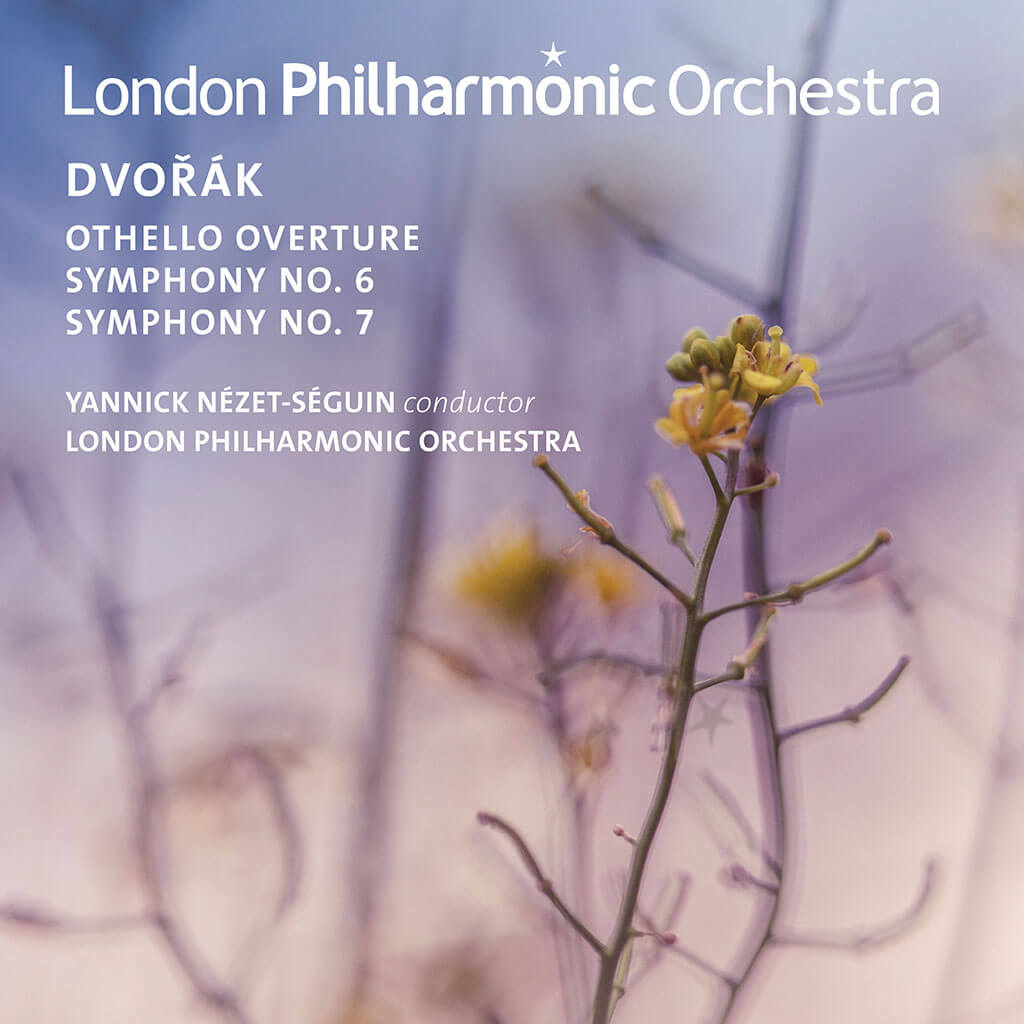
Last week, Yannick Nézet-Séguin was in the pit at the Metropolitan Opera to begin a run of performances of Wagner’s Die Fliegende Holländer. This summer he will be in Baden-Baden to lead performances of Mozart’s La Clemenza di Tito, followed by a recording of the work for Deutsche Grammophon, and in September he will conduct several performances of Richard Strauss’ Salome at the Vienna State Opera. In September 2020, he will preside over his first performances as music director of the Met, of Verdi’s Aïda starring Anna Netrebko. Looks like a pretty full plate for one of the world’s leading opera conductors. Did I mention that Nézet-Séguin is also music director of the Philadelphia Orchestra, l’Orchestre Métropolitan, and the Rotterdam Philharmonic, as well as a frequent guest conductor of the Berlin Philharmonic, the Vienna Philharmonic and many other prestigious orchestras?
In his latest recording, Yannick returns to the London Philharmonic (LPO), another orchestra with which he has a close relationship — he is a former principal guest conductor — in three works by Dvořák.
The least-known work on the CD, the Othello Overture Op. 93, composed late in Dvořák’s career (1892), is not an overture to anything – there is no opera coming after it – but rather the last part of a trilogy of symphonic poems bearing the overall title, “Nature, Life and Love.” The rather bizarre “love” section depicts the story of a man who dearly loves his wife but is wrongly convinced that she betrayed him and so smothers her to death! At once beautiful, powerful, and disturbing, Yannick and the LPO fully characterize all dimensions of the piece.

Dvořák: Symphony Nos 6 & 7. Othello Overture Op. 93. London Philharmonic Orchestra/Yannick Nézet-Séguin. LPO- 0095. Total Time: 99:00 (2 CDs).
Symphony No. 6 in D major Op. 60, although not nearly as well-known as the later Dvořák symphonies, is as fine as any of them. While carefully adhering to the letter of the score, Yannick nonetheless manages to bring to light inner parts that sometimes pass unnoticed. Rhythms are crisp and climaxes full-throated. The Scherzo (Furiant), with a headlong tempo and playing of infectious earthiness, is especially successful. The slower middle section, which includes a 4-bar piccolo solo, is as lovely as it is unexpected. Full credit to Yannick and the unnamed LPO piccolo player who make this passage more magical than I have ever heard it before.
Speaking of headlong tempi, the Presto at the end of the last movement is taken faster than I thought possible. First cellos, then violas and finally all the strings put on a display of fearless virtuosity that alone is worth the price of the CD. Great playing and a glorious climax to the entire symphony.
There are two other recent recordings of Dvořák’s Symphony No. 6, but compared to Yannick and the LPO, Jirí Belohlávek and the Czech Philharmonic (Decca 28947867579) sound studied and cautious, while Andrés Orozco-Estrada and the Houston Symphony (Pentatone 5186575) seem poorly-balanced and somewhat under-rehearsed.
Symphony No. 7, as performed here by Yannick and the LPO, is equally fine, giving us both insistent forward motion and enough flexibility to smell the roses along the way. Various conductors have been tempted to fiddle with Dvořák’s orchestration in this symphony over the years, adding horn and even trumpet doublings to strengthen woodwind lines that tend to get buried. While generally adhering to the letter of the score, Yannick does add horns to the melodic line played by second violins, oboes, clarinets and bassoons in the final bars of the symphony, which seems to me a perfectly acceptable solution to the perplexing balance problems in this passage.
For more RECORD KEEPING, see HERE.
#LUDWIGVAN
- SCRUTINY | TSO Lets Berlioz Do The Talking In Season Opener - September 21, 2018
- RECORD KEEPING | Even Yannick Nézet-Séguin Can’t Make Us Love Mozart’s La Clemenza di Tito - September 6, 2018
- RECORD KEEPING | Giovanna d’Arco With Anna Netrebko Explains Why The Best Operas Survive - August 30, 2018



